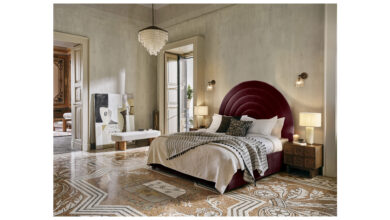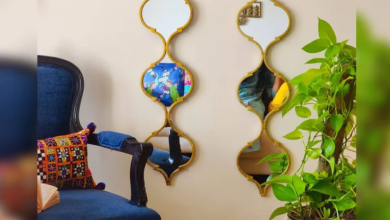Important Topics to be Covered in Interior Design Course

These courses seek to provide thorough information and useful abilities needed for future interior designers to succeed in their trade. We will explore in the blog what courses are required to become an interior designer, what courses are needed for a bachelor of interior design, and much more. Thus, keep reading to more precisely grasp interior design issues in India in 2024.
Subjects for Interior Design
Interior design colleges in Jaipur provide students with many learning opportunities, including colour schemes, structure, furniture, decorations, and clever and more appealing interior designs for locations. The subjects addressed in Interior Design Subjects include Interior Designing, Fundamentals of Structure, History of Art, Interior Design/Architectural, Interior Construction, etc. Interior design is the systematic process of producing aesthetically beautiful and functionally useful interiors. It addresses many facets:
Interior designers deftly organise areas so that they maximise movement and utility. They guarantee effective use of every space and take individual movement inside into account.
They choose colours, materials, and textures that accentuate one another to produce coherent designs. This includes choosing flooring, textiles, paint colours, and finishes that are consistent with the desired mood and style.
Interior designers choose and arrange furniture, fittings, and ornamental accents that complement the design concept and fit the given area. They guarantee that the selected items improve the design by juggling beauty with utility.
Their lighting design accentuates architectural details or design aspects and provides atmosphere. Appropriate lighting influences the ambience and usefulness of a room.
Interior designers closely interact with customers to better grasp their tastes, way of life, and demands. These features are included in the design to capture the client’s brand identity or personality.
Technical Competency: They are adept in utilising design tools for 3D modelling creation, plan drafting, and successful presentation of design ideas.
Interior designers follow industry standards, construction rules, and safety guidelines to guarantee their creations satisfy legal and safety criteria.
To create aesthetically pleasing but also harmonic environments, interior design combines technical knowledge, creative vision, and awareness of human behaviour.
Value of Internal Design
In many different spheres, interior design is quite important:
- Well-designed environments help to promote comfort, utility, and attractiveness, improving quality of life. Carefully crafted interiors support general happiness, productivity, and well-being.
- Interior design guarantees effective use of the given space by maximising its possibilities and preserving a harmonic balance between form and function.
- Interior design lets people convey their likes, values, and personalities, producing environments that fit their way of life.
- Strategic design ideas maximise movement and usefulness inside a place, addressing particular demands and increasing usability.
- Lighting, colours, fabrics, and furniture all help define a room’s ambience and atmosphere, thus affecting the moods and feelings inside it.
- Well-designed interiors value properties and increase their attractiveness to prospective renters or purchasers, influencing their market worth. Often, they also demand more.
- Interior designers increasingly emphasise sustainable design techniques, including environmentally friendly materials and energy-efficient solutions to reduce environmental effects.
- Advances in retail and business: In business environments, interior design is very important for drawing clients, generating unforgettable experiences, and thus strengthening brand identities.
- Interior design transcends simple aesthetics; it deeply affects comfort, functionality, emotions, and experiences inside places, influencing our daily lives both personally and professionally.
The courses in Interior Designing: Subjects
Emphasising clever and beautiful interior design, interior design courses include several academic areas. Subjects in interior design include structural foundations, art history, interior design or architecture history, interior construction, and more. Usually requiring fundamental courses like English or regional languages for entrance, these courses become especially important if one finishes 12th-grade Commerce.
Bsc Interior Design Subjects
Investigating Bachelor of Interior Design or BSc in Interior Design courses exposes students to various disciplines, delving into the depths of structural complexity and interior aesthetics.
Over three years, the BSc Interior Design focuses on designing appealing environments and strategic design of both business and personal interiors, among other aspects.
Among the most often taught topics in the BSc Interior Design Syllabus are arts and graphics, drawing techniques, model-making workshops, and the history of interior design.
Interior Design Courses Syllabus Materials and Textiles
Students in this course go through the decisions and use of fabrics and materials in interior design. Along with their applications, students will study the qualities of several materials, including wood, metal, glass, and composites. The course covers colour theory, patterns, fabric kinds, textile selection, Sustainable methods, and creative materials that have great value. Through practical projects and case studies, students acquire abilities in material sourcing. Projects, semester counts, and final presentations provide the foundation of evaluation.
Interior Design Courses: Space Planning Syllabus
The ideas and techniques of space planning in interior design are under strong focus in this course. Students will learn to design functioning layouts, analyse and appraise space needs, and create effective traffic flow. Taught include zoning, ergonomics, and space-friendly furnishings. This course emphasises the need to design ideas that satisfy client needs and enhance the customer experience. The assessment relies on extensive space planning presentations, mid-term projects, and practical tasks.
Design of Lighting in Interior Design Courses Syllabus
Interior Design Course coursework covers the fundamental ideas of lighting design. Topics, including lighting kinds, sources, fixtures, and their effects on look and operation, take the front stage. The key subjects are energy efficiency, light layering, and colour temperature. The training emphasises designing lighting schemes that enhance the ambience to satisfy customer needs. The assessment relies on the mid-term projects, practical tasks, and thorough space planning presentations.
Environmental Design for Courses in Interior Design Syllabus
Interior Design Course content focuses on fundamental ideas and techniques of sustainable design in interior space. Among the subjects pupils will study are sustainable construction methods, energy-efficient systems, and environmentally friendly materials. The major subjects are reducing waste, green certification, and life cycle evaluation. While considering the beauty and aesthetics of the area, the course focuses on and guides students to reduce environmental effects. The assessments include a mid-term project, a final sustainable design presentation, and practical tasks.
Useful Projects for Syllabus in Interior Design Courses
Real-world tasks this course offers assist to get practical experience. Knowing the fundamental ideas of interior design, students spatially plan, choose materials, and create design ideas for living and business areas. Creativity, communication, and troubleshooting are valued highly. Reviews by peers, presentations, and portfolios comprise evaluations. This program gives students skills and a professional portfolio appropriate for the sector.
Conclusion
Ultimately, aspirant designers must have a strong awareness of interior design issues. BSc interior design college in Jaipur addresses technical concerns, arts, and history, among other topics. Courses in diplomas stress design, graphics, and CAD. These courses provide a thorough knowledge of creating spaces and cultivate abilities necessary for a successful career in interior design. Investigating these many disciplines gives anyone hoping to work in the exciting interior design industry a strong basis.








